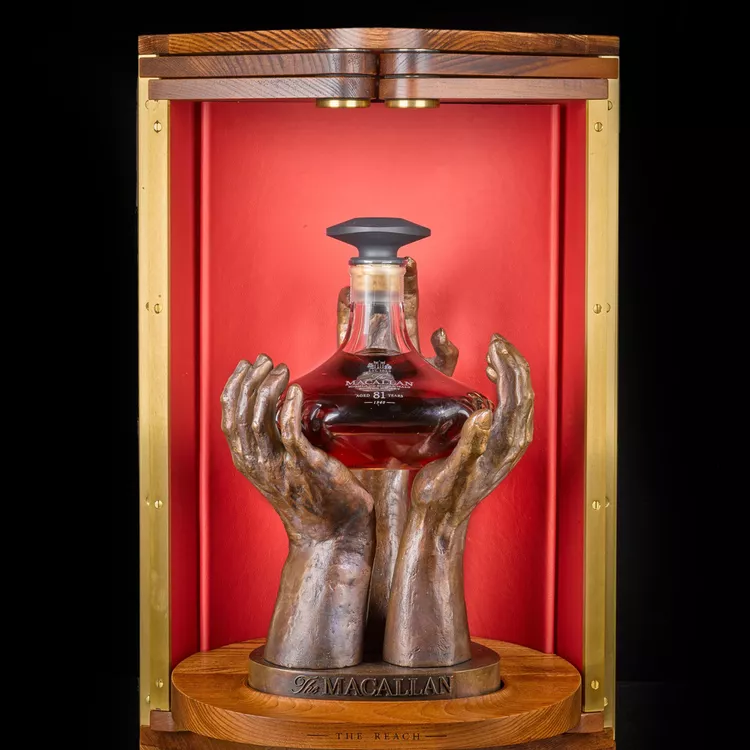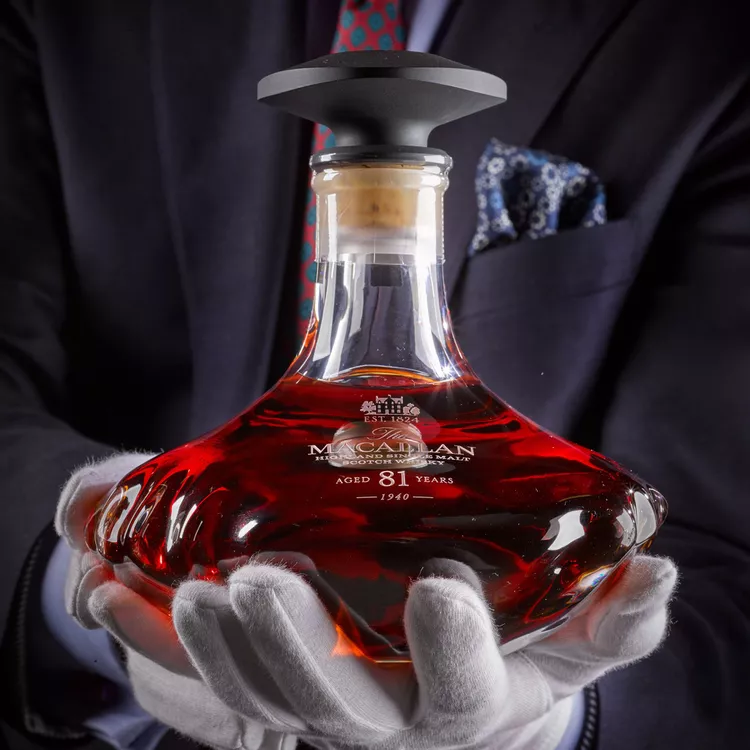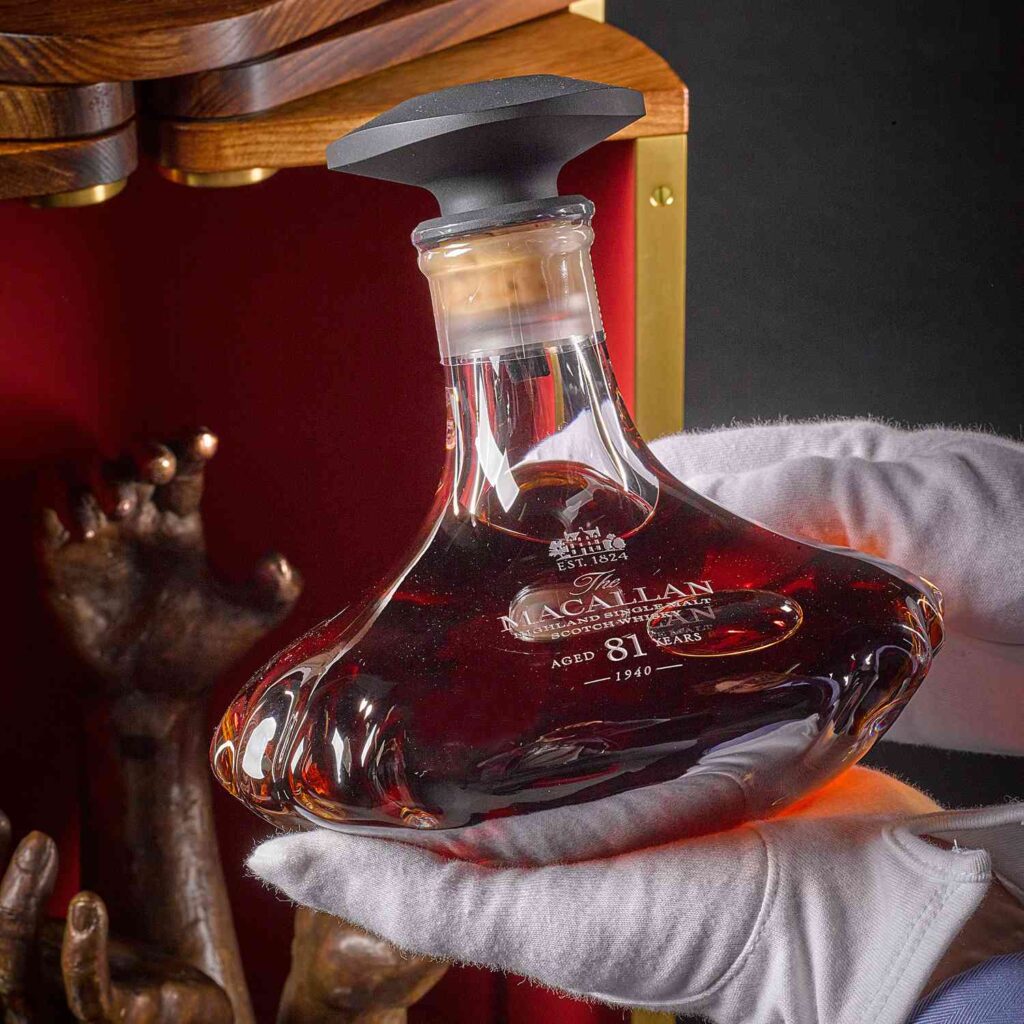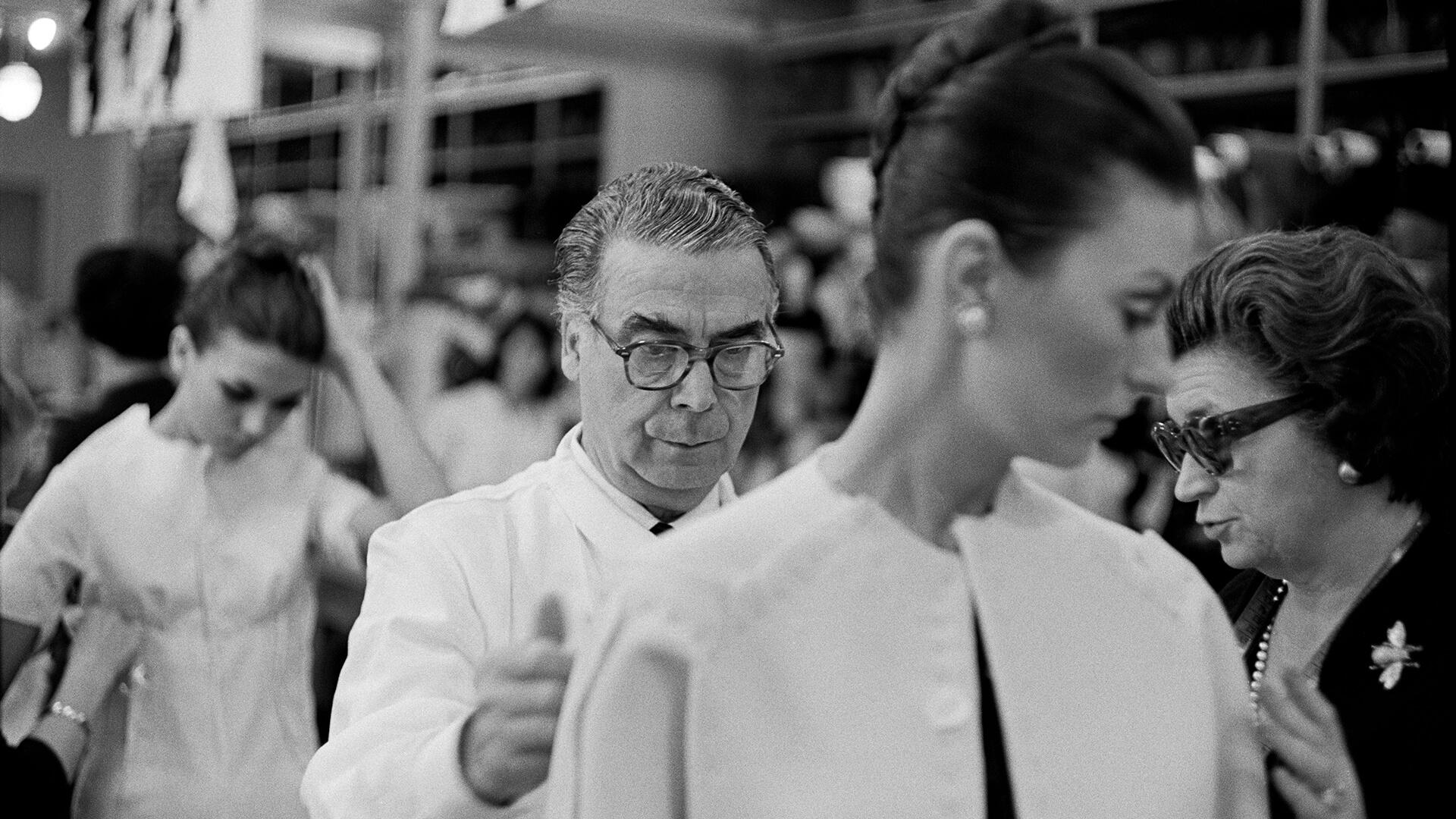Step into the enchanting world of Scotch whisky, where time is not just a measure but a precious ingredient. In this realm, age is celebrated, and the spirits mature like fine wine, gaining complexity, character, and a story that spans decades, if not centuries. Today, we embark on a journey that takes us deep into the heart of this captivating universe to explore a bottle that stands as a testament to time itself – the world’s oldest single malt Scotch, available for $250,000.
In the world of whisky, age is more than a number; it’s a mark of distinction. It represents patience, expertise, and a commitment to excellence that transcends generations. As we uncover the secrets of this extraordinary Scotch, we’ll delve into the significance of aging, the allure of rarity, and the profound experience of savoring a spirit that has weathered the years.
So, raise your glass to history, craftsmanship, and the artistry of time. Join us on this odyssey as we unveil the story behind a bottle embodying the essence of Scotch whisky.
The Legacy of Age
In the world of Scotch whisky, time is not just a bystander; it’s an essential participant in crafting liquid gold. Aging whisky is a practice that elevates this spirit to a level of sophistication and complexity that leaves connoisseurs in awe. In this section, we will explore the profound significance of aging in Scotch whisky, understanding how time transforms a simple blend of water, grain, and malt into a work of art that tantalizes the senses.
How Does Aging Influence the Flavor Profile?
The magic of aging begins when whisky rests in oak casks. Over the years, the spirit interacts with the wood, drawing out compounds that infuse it with distinctive flavors. The longer the aging process, the deeper and more complex these flavors become.
Complexity through Maturation
Each year spent in the cask imparts unique characteristics to the whisky. The first few years soften the spirit, mellowing the harsher notes and harmonizing the flavors. As time progresses, the whisky absorbs compounds from the wood, such as vanillin and tannins, contributing to a rich and nuanced flavor profile. Hints of vanilla, caramel, and even spices emerge, transforming the whisky into a sensory delight.
The Influence of the Cask
The type of cask used for aging is pivotal in shaping the whisky’s flavor. Bourbon barrels, sherry butts, and port pipes lend distinct qualities to the spirit. For instance, whisky aged in sherry casks may acquire fruity and nutty notes, while bourbon casks impart sweetness and vanilla undertones. These casks are like artists’ palettes, painting a unique portrait of flavors over time.
The Sweet Spot of Aging

There’s a sweet spot in the aging process when the whisky reaches its peak of perfection. This varies from one whisky to another, but it’s a delicate balance between the spirit and the wood. Aging for too long can lead to an overpowering woody taste, while insufficient aging may result in a lack of depth. Master distillers carefully monitor this journey, ensuring the whisky attains its finest form.
Historical Significance of Aged Scotch Whiskies
Beyond flavor, aged Scotch whiskies carry a profound historical legacy. They are a living testament to the artistry of distillation and the endurance of tradition. These whiskies have often witnessed generations pass, significant events unfold, and historical moments captured in their amber depths.
A Liquid Chronicle
Imagine sipping a Scotch whisky that has been aging since the early 20th century. It’s not just a drink; it’s a sip of history. Such aged bottles uniquely transport us back in time, connecting us with eras long gone. They evoke a sense of nostalgia and curiosity, inviting us to ponder the world as it once was.
Legacy of Expertise
Aging whisky is an art that requires an exceptional level of expertise. Master distillers and blenders are akin to time custodians, carefully selecting casks, monitoring aging conditions, and deciding when the whisky has reached its zenith. The dedication to maintaining age-old traditions while adapting to modern methods is a testament to the craftsmanship that goes into every bottle.
In the world of Scotch whisky, age isn’t just a number; it’s a story waiting to be told. It’s the culmination of time, craftsmanship, and history that transforms a humble distillation into a cherished legacy. As we savor each drop of an aged Scotch, we do more than appreciate its flavor; we pay tribute to the artistry of time itself.
How Does Aging Influence the Flavor Profile?
The magic of aging begins when whisky rests in oak casks. Over the years, the spirit interacts with the wood, drawing out compounds that infuse it with distinctive flavors. The longer the aging process, the deeper and more complex these flavors become.
Complexity through Maturation
Each year spent in the cask imparts unique characteristics to the whisky. The first few years soften the spirit, mellowing the harsher notes and harmonizing the flavors. As time progresses, the whisky absorbs compounds from the wood, such as vanillin and tannins, contributing to a rich and nuanced flavor profile. Hints of vanilla, caramel, and even spices emerge, transforming the whisky into a sensory delight.
The Influence of the Cask
The type of cask used for aging is pivotal in shaping the whisky’s flavor. Bourbon barrels, sherry butts, and port pipes lend distinct qualities to the spirit. For instance, whisky aged in sherry casks may acquire fruity and nutty notes, while bourbon casks impart sweetness and vanilla undertones. These casks are like artists’ palettes, painting a unique portrait of flavors over time.
The Sweet Spot of Aging
There’s a sweet spot in the aging process when the whisky reaches its peak of perfection. This varies from one whisky to another, but it’s a delicate balance between the spirit and the wood. Aging for too long can lead to an overpowering woody taste, while insufficient aging may result in a lack of depth. Master distillers carefully monitor this journey, ensuring the whisky attains its finest form.
Historical Significance of Aged Scotch Whiskies
Beyond flavor, aged Scotch whiskies carry a profound historical legacy. They are a living testament to the artistry of distillation and the endurance of tradition. These whiskies have often witnessed generations pass, significant events unfold, and historical moments captured in their amber depths.
A Liquid Chronicle
Imagine sipping a Scotch whisky that has been aging since the early 20th century. It’s not just a drink; it’s a sip of history. Such aged bottles uniquely transport us back in time, connecting us with eras long gone. They evoke a sense of nostalgia and curiosity, inviting us to ponder the world as it once was.
Legacy of Expertise
Aging whisky is an art that requires an exceptional level of expertise. Master distillers and blenders are akin to time custodians, carefully selecting casks, monitoring aging conditions, and deciding when the whisky has reached its zenith. The dedication to maintaining age-old traditions while adapting to modern methods is a testament to the craftsmanship that goes into every bottle.
In the world of Scotch whisky, age isn’t just a number; it’s a story waiting to be told. It’s the culmination of time, craftsmanship, and history that transforms a humble distillation into a cherished legacy. As we savor each drop of an aged Scotch, we do more than appreciate its flavor; we pay tribute to the artistry of time itself.
This interplay of time, wood, and expertise makes aged Scotch whiskies a treasure for enthusiasts and collectors alike. In the next section, we will delve into the allure of a Scotch whisky that stands as a pinnacle of rarity and craftsmanship – a $250,000 bottle that embodies the very spirit of time’s embrace.
The Pinnacle of Rarity: A $250,000 Scotch
Unveiling the $250,000 Bottle
As we venture deeper into the world of aged Scotch whiskies, we encounter a bottle that transcends the boundaries of luxury. Priced at a staggering $250,000, it is a testament to rarity and exclusivity. But what makes this Scotch so uniquely valuable?
What Makes This Scotch So Expensive?
The price tag of $250,000 is not arbitrary; it reflects a combination of factors contributing to its astronomical value. Firstly, the rarity of the whisky plays a pivotal role. Whiskies of this age and caliber are incredibly scarce, often requiring decades of aging in precise conditions. The scarcity adds to the allure, as only a limited number of bottles are available.
Secondly, the craftsmanship involved in producing such a whisky is extraordinary. From selecting the finest grains and malts to the meticulous distillation process, every step is executed with precision and care. The expertise of master distillers and blenders is a cornerstone of the whisky’s quality.
The Craftsmanship Behind the Creation
Crafting a Scotch whisky of this caliber is a labor of love that spans generations. It starts with selecting the grains and malts, followed by the fermentation, distillation, and aging processes. The choice of oak casks, the monitoring of temperature and humidity, and the art of blending all contribute to the final masterpiece.
Each cask selected for aging in this exceptional Scotch whisky has a unique story. It has patiently cradled the spirit, imparting flavor, color, and character over the years. The journey from distillation to the bottle is of precision, care, and a deep respect for tradition.
In the world of Scotch whisky, a bottle priced at $250,000 is not just a beverage; it’s a work of art, a testament to craftsmanship, and a symbol of rarity. It represents the culmination of nature’s elements, the hands of skilled artisans, and the patience of time itself.
In the next section, we will delve into the sensory experience of tasting this remarkable elixir of time, exploring the flavors and sensations that make it a connoisseur’s dream.
Tasting the Elixir of Time
As we begin tasting the world’s oldest single malt Scotch available for $250,000, we enter a realm of sensory indulgence. This is where the artistry of aging and craftsmanship converge, creating a symphony of flavors that dance on the palate.
A Journey through Flavor Notes
Describing the Unique Tasting Experience

Pouring a dram of this extraordinary Scotch whisky is akin to opening a treasure chest of flavors. The initial nose reveals a complexity that can only be achieved through decades of aging. The aroma may contain hints of dried fruits, oak, and a subtle smokiness that beckons the senses.
The whisky unfolds on the tongue like a finely woven tapestry with the first sip. Layers of flavor emerge, each one distinct and harmonious. Notes of vanilla, toffee, and spices gently caress the palate, followed by a wave of warmth that radiates down the throat. It’s a taste that lingers, inviting contemplation and appreciation.
How Does It Compare to Other Scotch Whiskies?
Comparing this aged Scotch to its younger counterparts is like contrasting a masterpiece with a sketch. The depth and intricacy of flavor set it apart from the rest. While younger whiskies may offer vibrancy and freshness, the $250,000 Scotch represents maturity and refinement.
The aging process has allowed the whisky to reach a level of balance and integration that is rarely achieved. It is not simply a collection of flavors but a cohesive composition where every note plays its part in the ensemble.
The tasting experience is a journey through time, as each sip reveals a chapter of the whisky’s story. It’s a testament to the art of distillation and aging, a living history that can be savored in every drop.
In the following section, we will explore the allure of this aged Scotch whisky to collectors and enthusiasts, understanding why owning a bottle is not just an acquisition but a source of pride and prestige.
The Collector’s Pride
Owning a bottle of the world’s oldest single malt Scotch available for $250,000 is more than a possession; it’s a badge of honor among whisky enthusiasts and collectors. The allure of such a prized whisky goes beyond its exquisite taste; it’s a symbol of prestige and a statement of dedication to the craft.
Who Invests in Such Rare Bottles?
Collectors and enthusiasts from around the world are drawn to these exceptional whiskies. They recognize that owning a bottle with a price tag of $250,000 is not just an acquisition but an investment in history and artistry. These bottles often enter private collections, luxury bars, and even prestigious auctions.
The Collector’s Market for Aged Scotch Whisky
The collector’s market for aged Scotch whisky is a thriving and passionate community. Collectors seek out these rare bottles to complete their portfolios, which may include whiskies from different eras and distilleries. Owning a bottle like this is not only a matter of prestige but also a connection to a shared passion for fine Scotch.
The Allure of Owning a Piece of History
Aged Scotch whiskies are more than just beverages; they are pieces of history encapsulated in glass. Each bottle tells a story of the distillery’s legacy, the craftsmanship of the master blender, and the passage of time. Owning a bottle is like owning a piece of that history—a tangible link to the past.
Collectors take pride in preserving these bottles, often ensuring that they remain unopened, allowing future generations to experience the same awe and wonder that they do. It’s a testament to the enduring value of these remarkable whiskies.
In the world of fine spirits, a bottle like this isn’t just a possession; it’s a legacy to be cherished, a conversation piece, and a symbol of appreciation for the artistry and history that goes into crafting aged Scotch whisky.
In the next section, we will delve into the cultural and historical significance of Scotch whisky, understanding its role as a symbol of heritage and tradition.
Savoring History
Scotch whisky is more than just a beverage; it’s a cultural and historical icon that has left an indelible mark on the world. As we explore the world’s oldest single malt Scotch available for $250,000, we uncover its role as a symbol of heritage and tradition and the stories it carries within its amber depths.
The Cultural and Historical Significance
Scotch Whisky as a Symbol of Heritage
For centuries, Scotch whisky has been intertwined with the culture and identity of Scotland. It’s not merely a drink but a symbol of the nation’s spirit and resilience. The art of whisky-making has been passed down through generations, preserving the unique traditions and techniques of Scotch whisky.
Scotch whisky is celebrated during festivals, gatherings, and special occasions, serving as a reminder of the rich history and craftsmanship that defines Scotland. It’s a cultural touchstone that connects people to their roots and the land from which it originates.
Stories Behind the Casks and Distilleries
Each bottle of aged Scotch whisky carries with it a multitude of stories. From the distillery where it was crafted to the cask in which it matured, every element has a narrative to tell. Distilleries, some dating back centuries, have weathered wars, economic shifts, and changing tastes, yet they continue to produce exceptional spirits.
The casks have witnessed the passage of time, absorbing the spirit’s character and the environment in which they were stored. They are a testament to nature’s role in shaping the whisky, with Scotland’s wood and climate playing their parts in the aging process.
Aged Scotch whiskies are a living history, encapsulating their origin’s cultural, historical, and natural elements. They are a connection to the past, a tribute to tradition, and a celebration of the artistry of whisky-making.
In the final section of this article, we will ponder the future of Scotch whisky, examining the challenges and opportunities that lie ahead as this cherished tradition evolves in the modern world.
The Future of Scotch Whisky

As we raise our glasses to the world’s oldest single malt Scotch available for $250,000, we must also contemplate the future of this time-honored tradition. While steeped in history, Scotch whisky continues to evolve in response to changing tastes, technologies, and global dynamics.
Preserving Tradition in a Modern World
Challenges and Opportunities for the Scotch Whisky Industry
The Scotch whisky industry faces a delicate balance between preserving tradition and adapting to the demands of the modern world. Challenges such as climate change, regulations, and trade agreements impact the production and distribution of Scotch. Master distillers must navigate these challenges while maintaining the quality and integrity of their craft.
Innovations in Aging and Production
Innovation is key to the future of Scotch whisky. Distilleries are experimenting with new wood types, finishes, and aging techniques to create unique flavor profiles. Sustainability and environmental concerns drive the industry to explore eco-friendly practices, from sourcing grains to packaging.
Advancements in technology have enabled distilleries to monitor aging conditions with greater precision, ensuring consistency in quality. Additionally, digital marketing and e-commerce have expanded the reach of Scotch whisky to a global audience.
While innovation offers exciting possibilities, it is crucial to strike a balance that honors the traditions and heritage that make Scotch whisky exceptional.
As we contemplate the future of Scotch whisky, we must remember that it is a spirit shaped by time, culture, and craftsmanship. The world’s oldest single malt Scotch available for $250,000 reminds us that the past and the present coexist in each glass, and it is our privilege to savor this timeless elixir.
In Conclusion, this exceptional Scotch whisky is not just a drink; it’s a journey through history, an appreciation of artistry, and a glimpse into the possibilities that await the world of whisky. It is a testament to the legacy of age, the allure of rarity, and the enduring value of tradition. As we raise our glasses to this remarkable spirit, we honor the past, celebrate the present, and toast to the future of Scotch whisky.
In Conclusion, the world’s oldest single malt Scotch, available for $250,000, represents more than a mere beverage; it encapsulates the essence of time, craftsmanship, and heritage. This remarkable spirit is a testament to the legacy of age, the allure of rarity, and the enduring value of tradition.
As we raise our glasses to this extraordinary Scotch whisky, we savor its exquisite flavors and pay homage to the centuries-old art of whisky-making. It serves as a reminder that we are connected to the past in every sip, celebrating the present and embracing the future of Scotch whisky.
In a world where time often rushes by, this aged Scotch whisky invites us to pause, reflect, and appreciate the artistry of aging. It reminds us that greatness is not achieved overnight but through patience, dedication, and a profound respect for tradition.
So, whether you’re a collector, an enthusiast, or simply someone who appreciates the finer things in life, this $250,000 bottle of Scotch is an invitation to embark on a sensory journey through history, culture, and craftsmanship. It is a sip of perfection that transcends time itself.
As you contemplate the world’s oldest single malt, Scotch, may you find inspiration in the dedication of master distillers, the wisdom of time, and the enduring legacy of a spirit that has captured hearts and palates for generations.
In this class, the past meets the present, and the future is filled with possibilities. Here’s to the world of Scotch whisky, where age is not a limitation but a source of timeless wonder. Sláinte!







